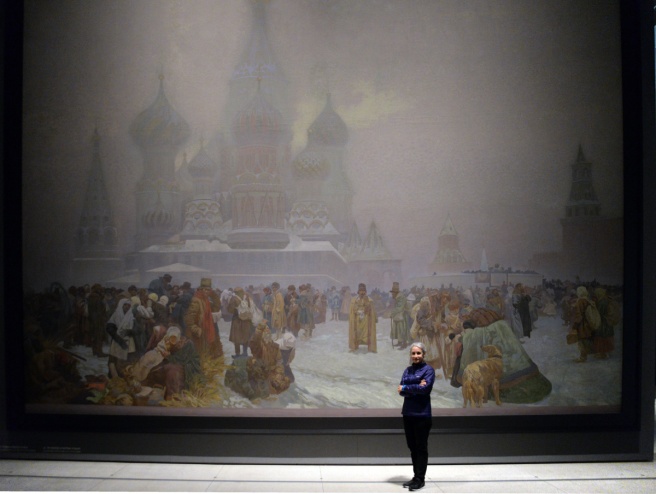
Veletrzni Palace, The National Gallery Collection of Modern and Contemporary Art in Prague is haunted. No one will warn you, but after walking 4.5 acres on terrazzo floors, squinting under 200,000 square feet of artificial lighting, and witnessing 2300 to 3500 works of art practically alone, you’ll have the eerie feeling that many souls have passed here before you, and they weren’t all art lovers. This 1928 modernist building was conceived with the utopian goal to become the center of international trade for Prague (Fair Trade Palace). Then came the crash of 1929. By the Nazi invasion Prague’s Jews were detained here on their way to Theresienstadt concentration camp via the nearby railway station. In the 1950’s, the Communists revived the building’s original purpose, but in 1974 it burst into flames and stood waiting for the wrecking ball for decades. With a regime change and extensive rehabilitation, the Veletrzni Palace was reincarnated as a museum in 1995. There’s still a faint echo from the people whose histories intersected here under the banners of patriotism, Nazism, communism, revolution and capitalism.
* * * * * * * * *
Fortunately, the museum is now the home of The Slav Epic by Art Nouveau Czech artist Alphonse Mucha (1860-1939). These twenty canvases took almost twenty years of Mucha’s life. Although they may strike the non-Slav as kitschy and fearfully nationalistic, their monumental size and ambition is still wildly impressive.
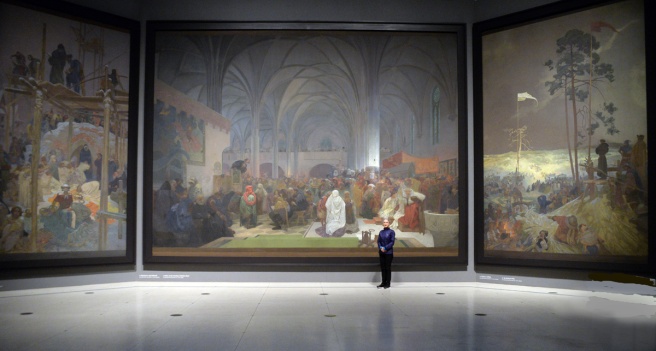
Mucha was trained as a theatrical backdrop painter in Vienna. To continue to work on this scale, he relocated his studio and his family to a rented castle in the Czech countryside.

Mucha traveled throughout Poland, Russia and the Balkans to study crucial Slavic history sites to formulate his themes.


Mucha’s work was financed by an American, Charles Richard Crane (1858-1939), heir to a Chicago plumbing manufacturing business. He was an Arabist and Eastern European expert who used his wealth and connections to advise presidents Wilson and Taft. By the late 1930’s he was a strong admirer of Hitler. Ironically, Crane’s favorite artist, Mucha, was detained by the Gestapo for his highly public Czech nationalism in 1939 and died from pneumonia shortly thereafter. By providence, Crane died the same year.
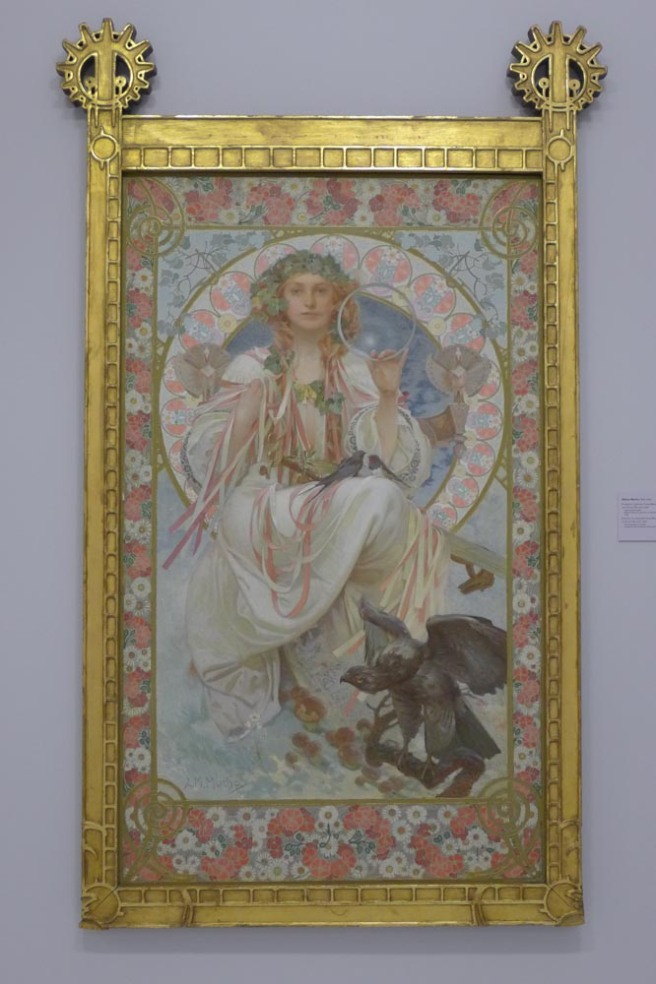
The museum owns a small but satisfying group of European paintings bought from the famous Parisian art dealers Kahnweiler and Vollard in the 1920’s. The purchases were thanks to the discerning eye of collector Vicenc Kramar who headed up the Picture Gallery of the Association of Patriotic Friends of the Arts in 1919. In 1960, the Communists added to the state-owned collection by coercing Kramar to “donate” his personal treasure trove of cubist paintings with the understanding that he could keep a fraction of his other works for his daughters. His heirs are suing the state today with no results so far.



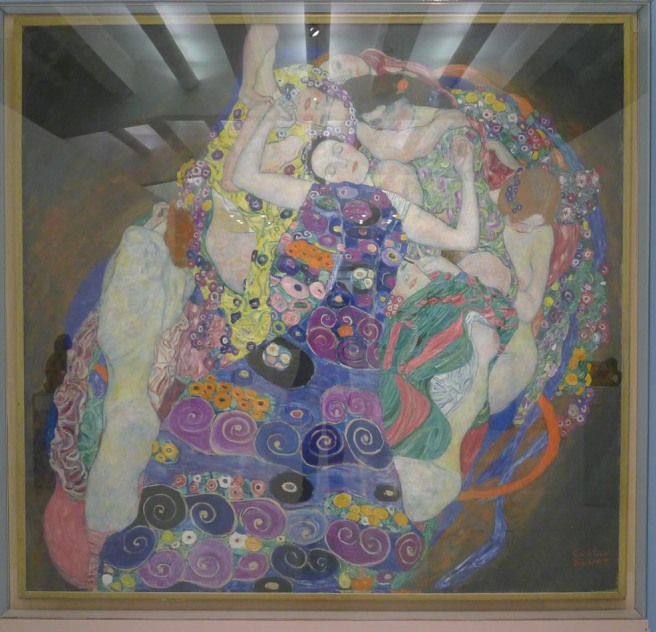
The museum’s mission to exhibit a comprehensive survey of all the modern and contemporary Czech art they can get their hands on means much of it will be unfamiliar to anyone who isn’t Czech.
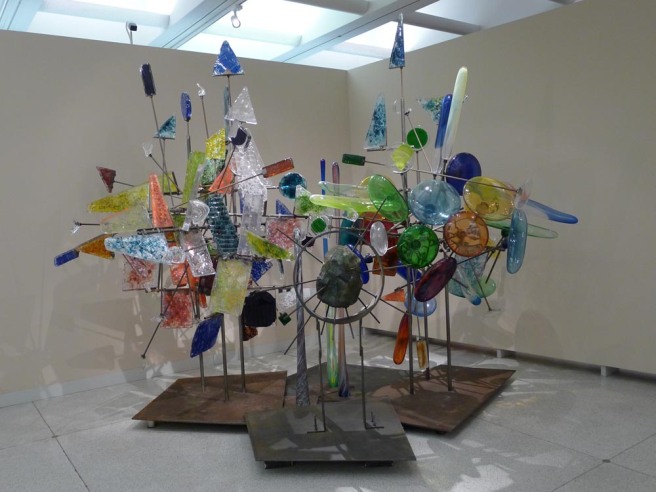


The quality of the art varies from distinguished to sentimental to frankly puzzling.

* * * * * * * * * * *
I know you’re hungry by now. If you want to keep feasting with your eyes as well as your body, walk over to CAFE IMPERIAL, http://www.cafeimperial.cz, Na Porici 15, 110 00 Praha 1, CZ Republic +420 246 011 440, reservations recommended. It’s a ceramic fantasy that feels like Mucha meets the Pergamon Museum over a hearty Czech meal.
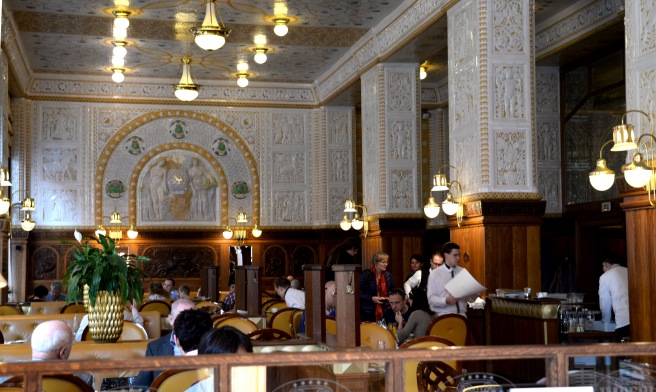
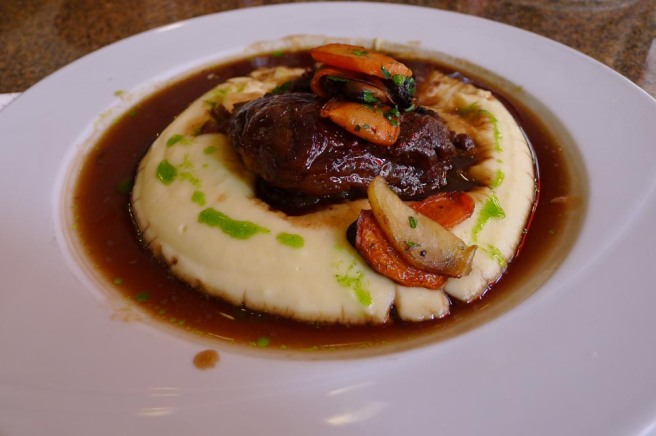
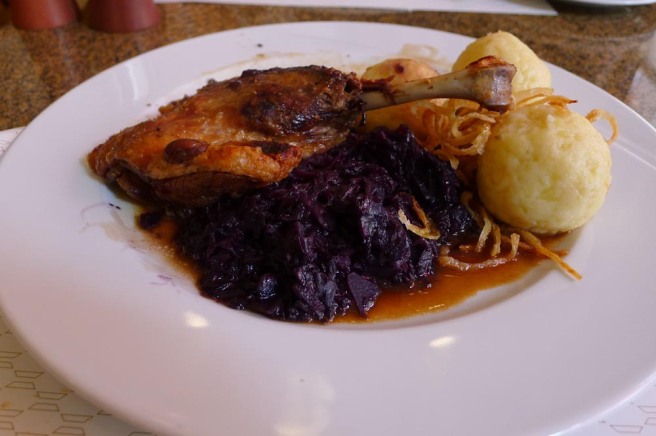
You’re going to need to walk off that hefty meal so take a stroll over to Kampa Island just underneath crowded Charles Bridge. Kampa Museum of Modern Art will be closed, but their best pieces of outdoor art are always open.


Prague is lit up like a dramatic theatre set at night. It’s the best time to stroll around the city or hop on a barge and float through the locks.



